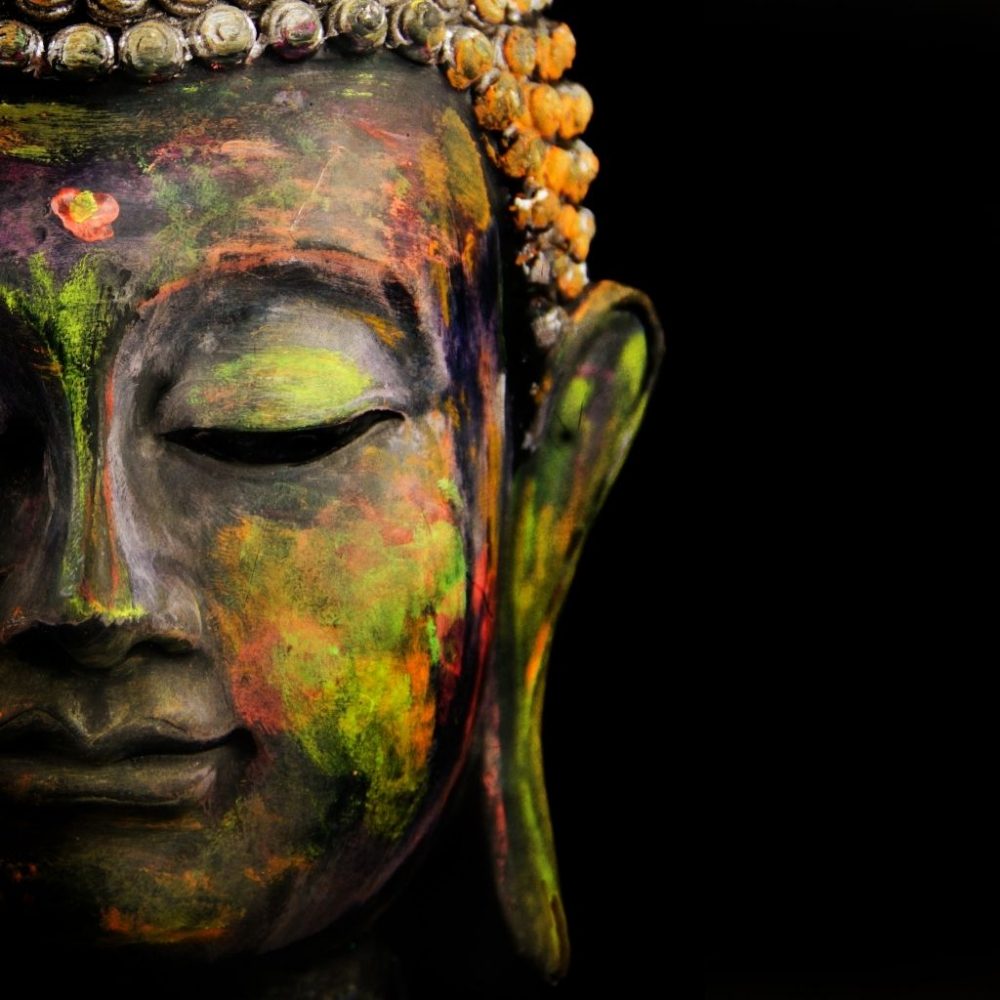What are Viveka and Vairagya (Everything About These Two Spiritual Qualities)
Yoga is as much a philosophy as it is a practice.
Yoga takes us through life in several ways.
It helps us answer the more existential questions about the self. It also enables us to develop that self – physically, mentally, and spiritually – so we can realize the self.

There are concepts in yoga that lie at the heart of its tradition – Sanskrit words that are difficult to translate and take a lot of dedicated effort to imbibe.
At the same time, once assimilated, the self changes. Life finds meaning.
This article is about two such concepts – Viveka and Vairagya.
Viveka is the quality of discriminating or discerning between what is right and wrong. Viveka leads to an understanding of the perishable nature of the world and hence, generates the response of dispassion. Vairagya means detachment. It develops the quality of not being attached to worldly things, including our pride, fears, complexes, and identity.
We map out a theoretical guide to understanding in detail what Viveka and Vairagya mean, finding a practical roadmap on how to live them, ending with how to get to ultimate freedom.
What is Viveka?
The closest English translation for the Sanskrit word Viveka is discernment or discrimination. Koneru Ramakrishna Rao, an Indian philosopher, says that Viveka’s wisdom helps differentiate between the real and the unreal, ‘between the self and the non-self,’ and ‘between the permanent and the impermanent.’
Through Viveka, one can recognize the causes of suffering and break through the bondage of the illusory world.
Vivekachudamani is a text in the format of a long poem on Advaita Vedanta, attributed to Adi Shankara, an Indian philosopher who consolidated the philosophy of Advaita. (To know more about Advaita, read this article)
In this text, he says that the development of Viveka is one of the main tasks of spiritual life and one of the most essential qualities to develop if one wants to attain the ultimate goal of liberation.
We now look at how to develop the quality of Viveka.

How to develop Viveka
The development of Viveka is a life-long pursuit. It is believed to be awakened only by constant Satsanga and Sravana. Satsanga is ‘being with the truth’ or being in the company of a guru or a community that gathers together for the truth. Sravana is the act of hearing the teachings of the Divine from the guru.
Hence to develop Viveka, one needs to live a yogic lifestyle, follow meditation practice, follow the path of devotion to Ishvara (Higher Reality), and practice non-attachment.
In daily life, one way to develop Viveka is the ‘stop and assess’ approach.
By questioning our decisions and rather than being impulsive, using critical thinking can help us practice Viveka.
Therefore, in any situation, by carefully educating oneself and critically examining what is presented before oneself using reason and analysis develops Viveka.
How does Viveka help us? We will discuss this next.
5 benefits of Viveka
Viveka helps us navigate through life in a much more aware way, helping us, at every step, to choose the path of wisdom.
Here are the many benefits of Viveka:
1. Creates long-term gains
We live in times of instant gratification, choosing short-term gains and immediate pleasures over thoughts, words, and actions that will lead us to self-growth.
Viveka helps us make those choices that create spiritual growth and long-term happiness.
2. Facilitates decision making
When at a crossroads, Viveka helps us distinguish between a righteous and an unrighteous action.
We can make the right decisions as Viveka brings in us an understanding of the true nature of reality and fosters clear thinking.
3. Leads us to the ultimate truth
Viveka is where one starts on the path to spiritual life.
The prerequisite to Viveka is deep thinking, which enables one to look into the fleeting nature of what we perceive as reality.
Once that awareness is built, one seeks to move out from the cycle of suffering.
4. Enables us to find joy within
While navigating through life, our desires, attachments, and reasons make us look for happiness in the wrong places.
Our search for safety, comfort, and love often ends up in disappointments and frustration.
Viveka helps us identify that the natural source of joy, love, and happiness is within us. We are the ultimate truth.
5. Brings growth and transformation
Each time we practice Viveka, we replace the seeds of old habit energy with new ways of clear seeing.
Our mental and spiritual bodies continue to strengthen with time and practice, thus leading to growth and transformation.
And now to the concept of Vairagya.

What is Vairagya?
Vairagya is a Sanskrit word that joins two words, ‘vi’ meaning without and ‘raga’ meaning interest, attachment, or passion. Put together, vairagya translates to non-attachment or dispassion. It helps us navigate through the temptations of the world without being sucked into them.
Like Viveka, Vairagya is also a contemplative practice.
Our attachments lead us to cling and desire things that we like and repulse from things we do not.
The more intense our attachments, the more difficult it is to remain unaffected when things do not go our way, and hence, greater is the suffering that we experience.
Vairagya is not doing away with likes and dislikes; instead, it enables us to stay detached from them.
So, rather than being controlled by our desires and aversions, Vairagya creates balance.
This brings us to the question – how do we practice Vairagya?
How to practice Vairagya
The first step to practicing Vairagya is setting an intention of non-attachment. When such situations arise that evoke strong likes and dislikes, we are aware of their occurrence.
The simplest way to proceed is to notice your immediate reaction to anything.
Is there a desire to cling, grasp, and hold onto something you like? And, is there a feeling of aversion and of pushing away things that you do not like?
Taking a step back to observe what is coming up and staying silent through the process helps us do away with our judgments and become still.
By cultivating awareness and practicing vairagya in small, everyday situations, we will be able to manifest this strength when times are tough.
A helpful way to build contemplation is to think about all those things that bring us pain – birth, death, sickness, loss, disappointments, etc.
When we do that, it is easy to see how the very nature of life is transitory, perishable, and impermanent.
This reflection helps cultivate vairagya.
We shall now delve into the two types of Vairagya.

The two types of Vairagya
Vairagya is of two kinds – Incidental Vairagya or Karanavairagya and Real Vairagya or Viveka Purvaka Vairagya.
Here is more about each of them.
Incidental Vairagya
Particular misfortunes in life sometimes steer us towards adopting a dispassionate approach, such as losing a loved one or a failure at work. The vairagya that develops, as a result, is known as Incidental Vairagya or Karanavairagya.
This type of vairagya is temporary and is dependent on the situation.
Once the mind becomes a bit settled, and an opportunity arises for it to grasp and cling, there is a reversal in its approach, and it goes back to the temptations of the world.
Real Vairagya
Known as Viveka Purvaka Vairagya in Sanskrit, Real Vairagya comes from discriminatory knowledge or Viveka. It is born from discernment and from the knowledge that helps one separate the real from the unreal.
Real Vairagya is what helps an aspirant to advance on the spiritual path.
It is independent of the situations in life, and hence, there is no conditionality attached to it.
Is there any connection between Viveka and Vairagya? Let’s find out.
Is there a relationship between Viveka and Vairagya?
Viveka enables one to discriminate between the eternal and non-eternal, the real and the unreal, the essence and the non-essence.
When one can distinguish and discern, one is able to see through the illusory nature of life.
This knowledge that comes through Viveka is what leads to vairagya. Hence, vairagya is born from Viveka.

What are the four spiritual qualities to gain ultimate freedom?
There are four sequential steps, known as Sadhana Chatushtaya, suggested as the means of cultivating self-realization and a deeper understanding of the spiritual path.
Here are the four steps:
1. Viveka
The first step is cultivating Viveka, which is about the intellect.
It enables one to distinguish the self from the non-self and the real from the unreal.
2. Vairagya
Vairagya is non-attachment to the pleasures of the world.
One still lives in the everyday world but becomes detached from worldly objects that create grasping or aversion.
3. Shat Sampatti
These are six virtues or practices that help one to stabilize the mind.
- Sama is the virtue of serenity.
When desires are eradicated, the mind becomes tranquil and peaceful. - Dama is the practice of rationally controlling the senses.
By controlling the mind, the mind, in turn, helps to control the senses. - Uparati is the resolve to turn the mind away from its desire for sensual pleasures.
- Titiksha is the virtue of endurance.
When situations around us are non-conducive to our comfort, they cause suffering. By practicing Titiksha, an aspirant can tolerate discomfort, fluctuations in the weather, for instance. - Sraddha is an intense and unshakeable faith in the Guru, scriptures, the yogic path, and our own self.
- Samadhana is the practice of one-pointed concentration of the mind on the Brahman or the Self, without allowing it to be distracted by external objects.
4. Mumukshutva
This is the longing for enlightenment and liberation from the sufferings of this world.
It comes as a result of the purification of the mind and mental discipline.
In closing
Yoga and its various practices, concepts, and disciplines are all aimed at helping us realize that which is eternal and pure within us.
Once it sets in, this awareness can help us transcend any separation between ourselves and that which is divine.
It can also help us eradicate desire, something that Viveka and Vairagya both lead us to.
Practicing Viveka and Vairagya in this ever-changing world can be difficult. This is a great video to learn how to maintain your practice.

